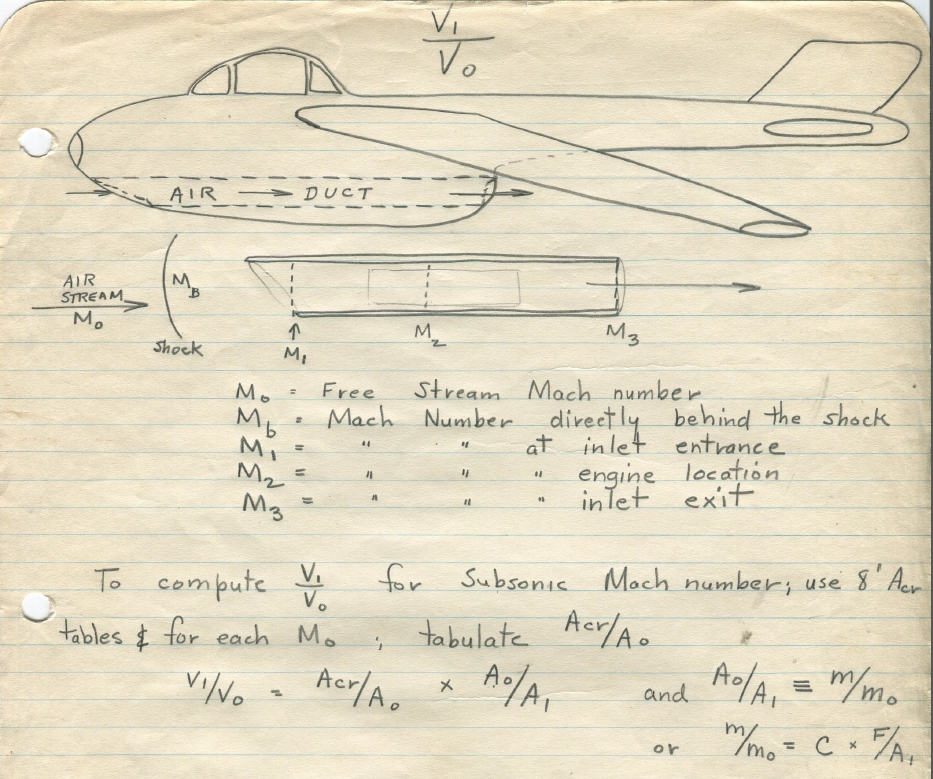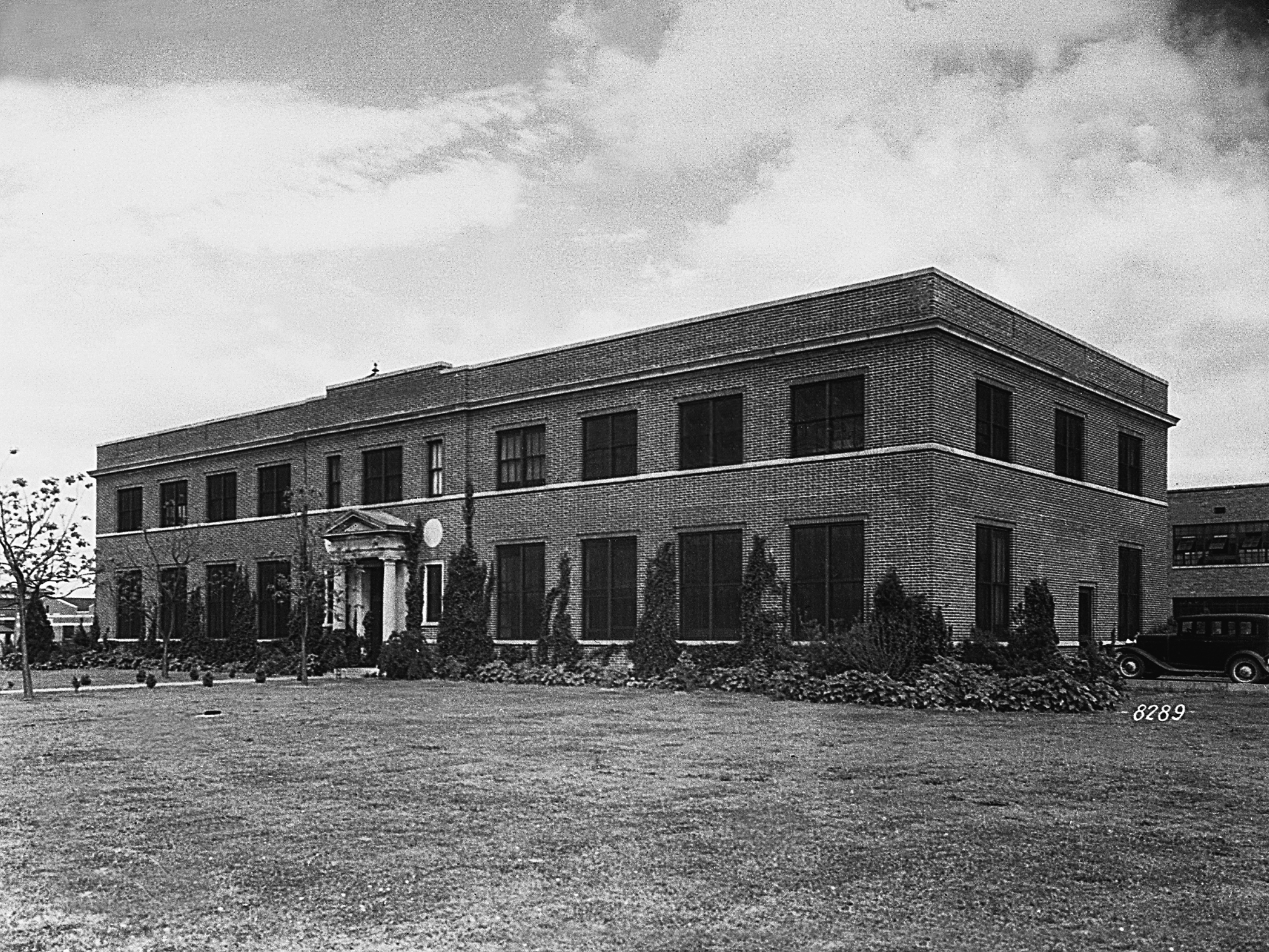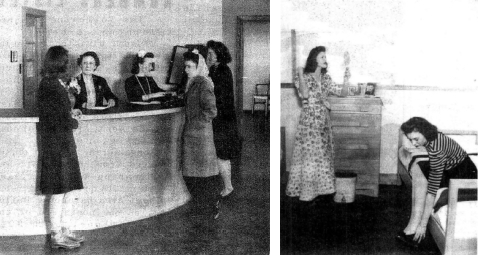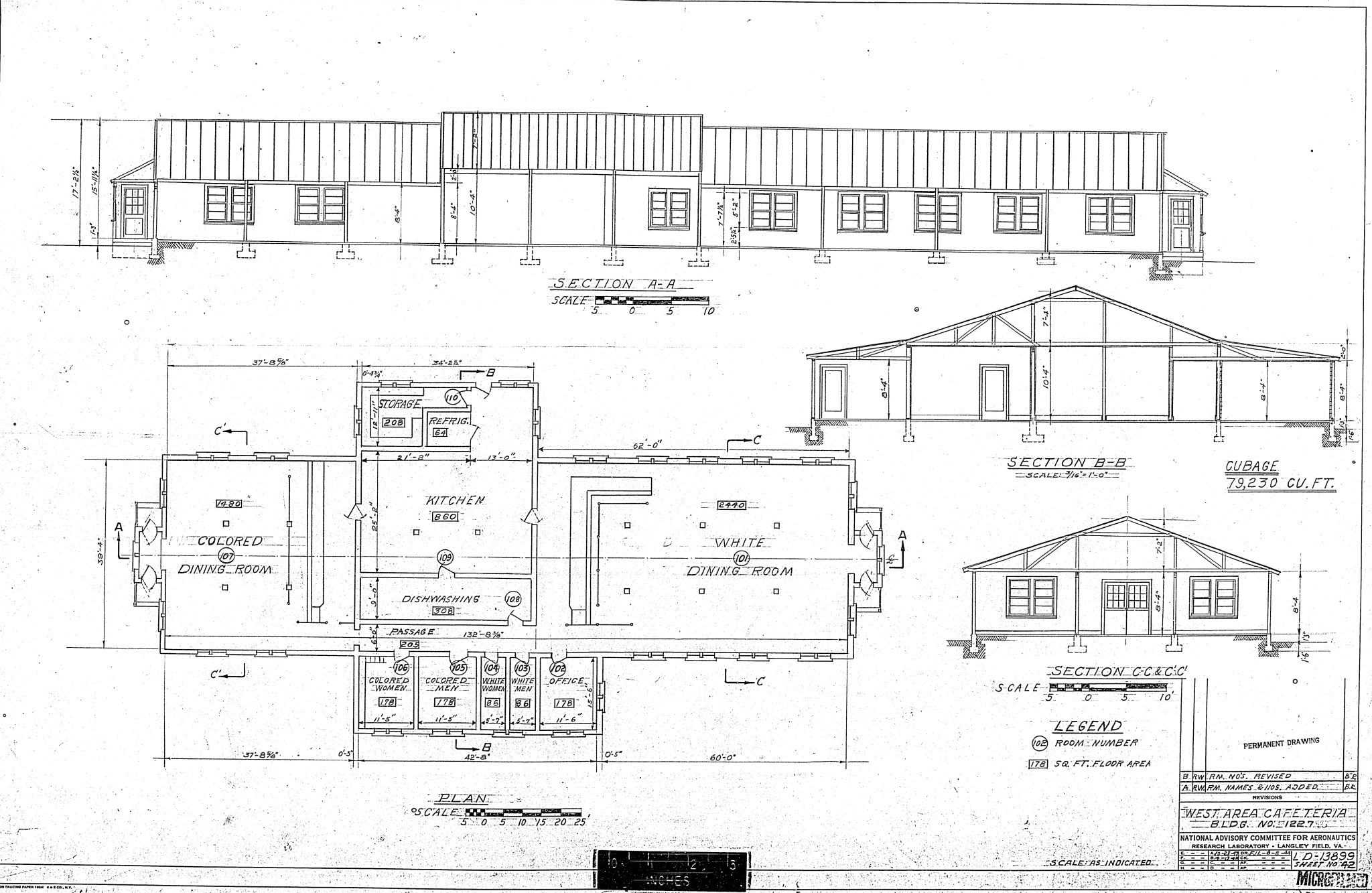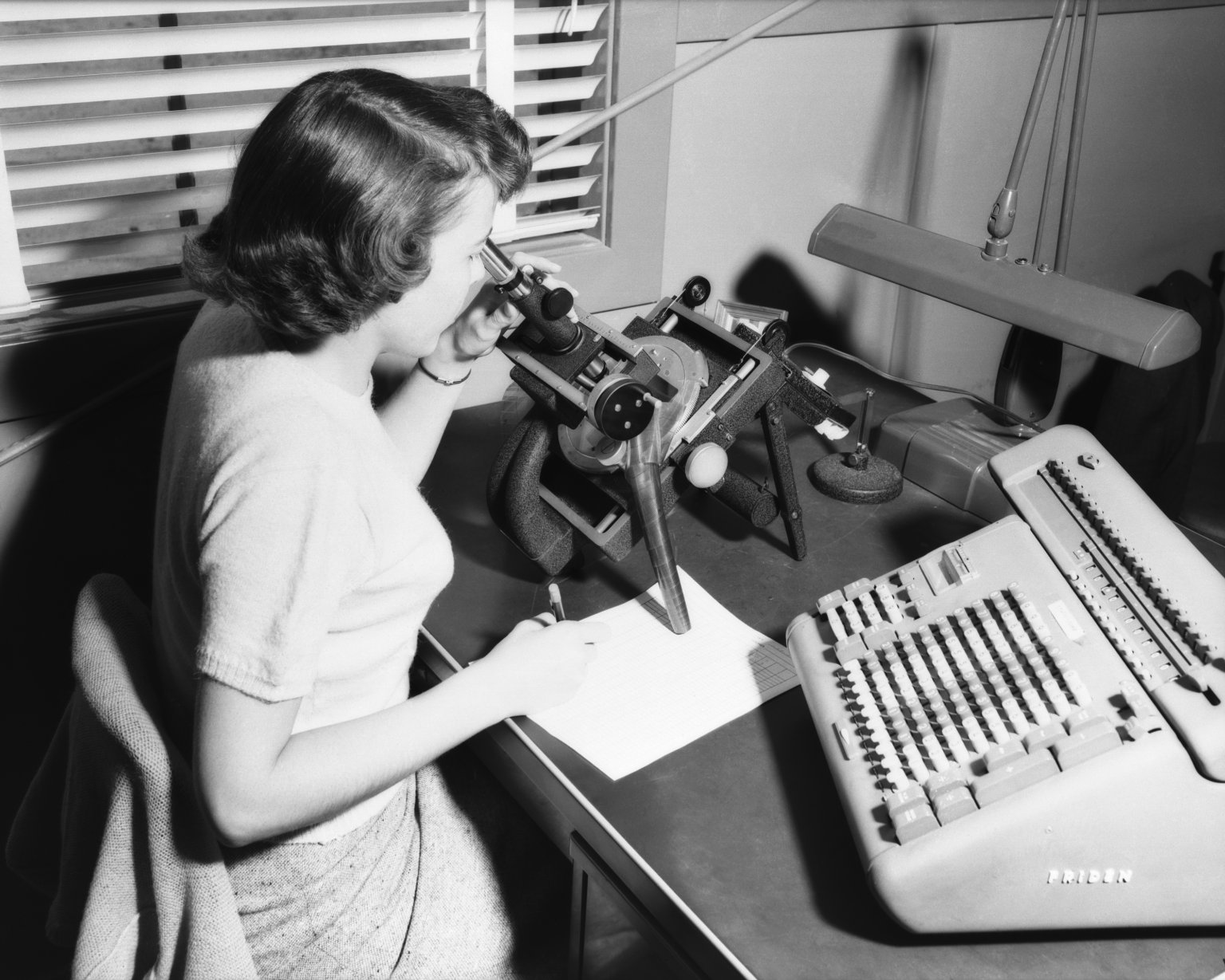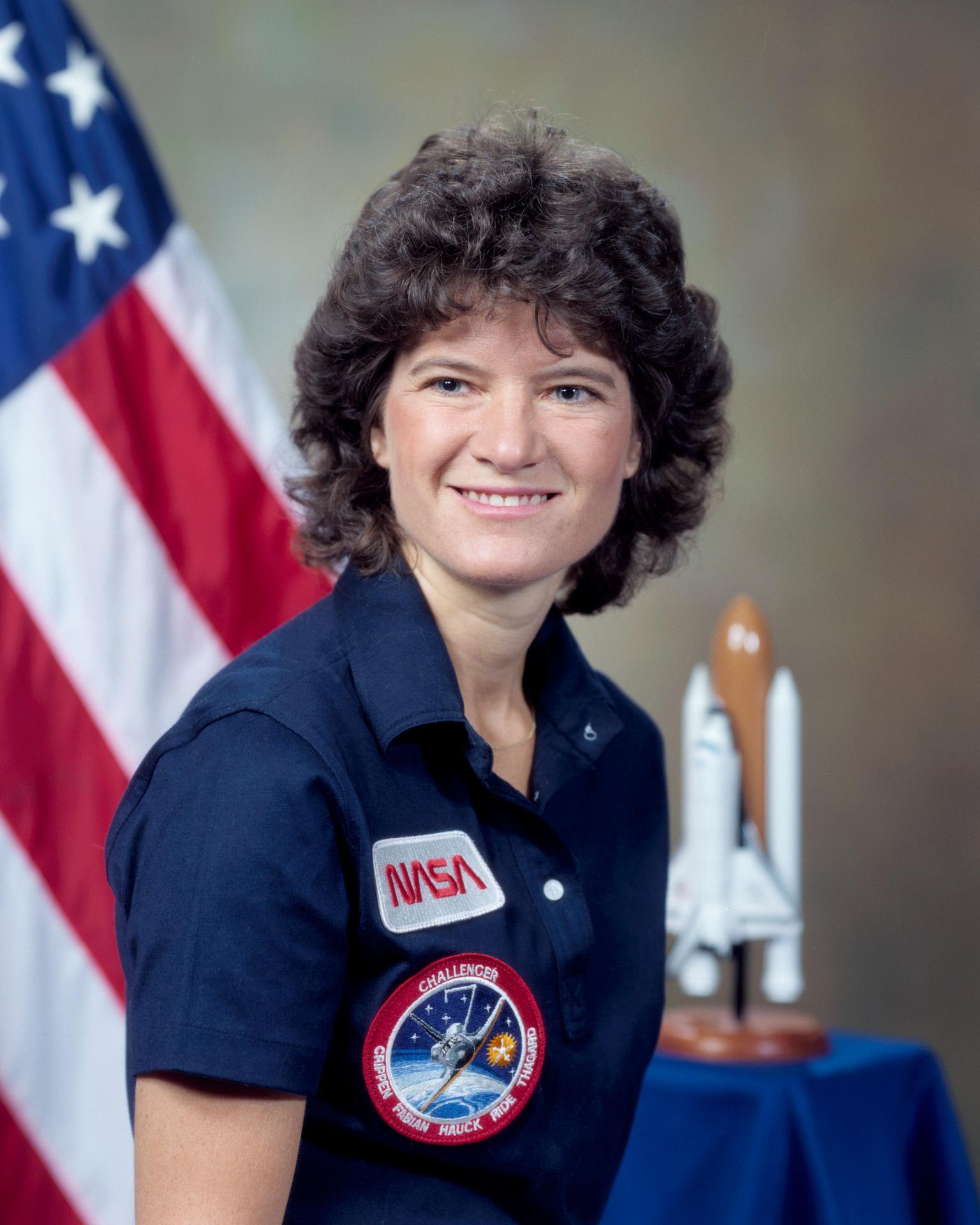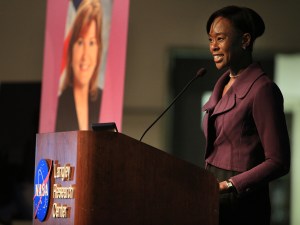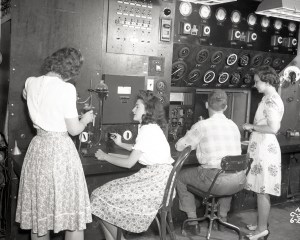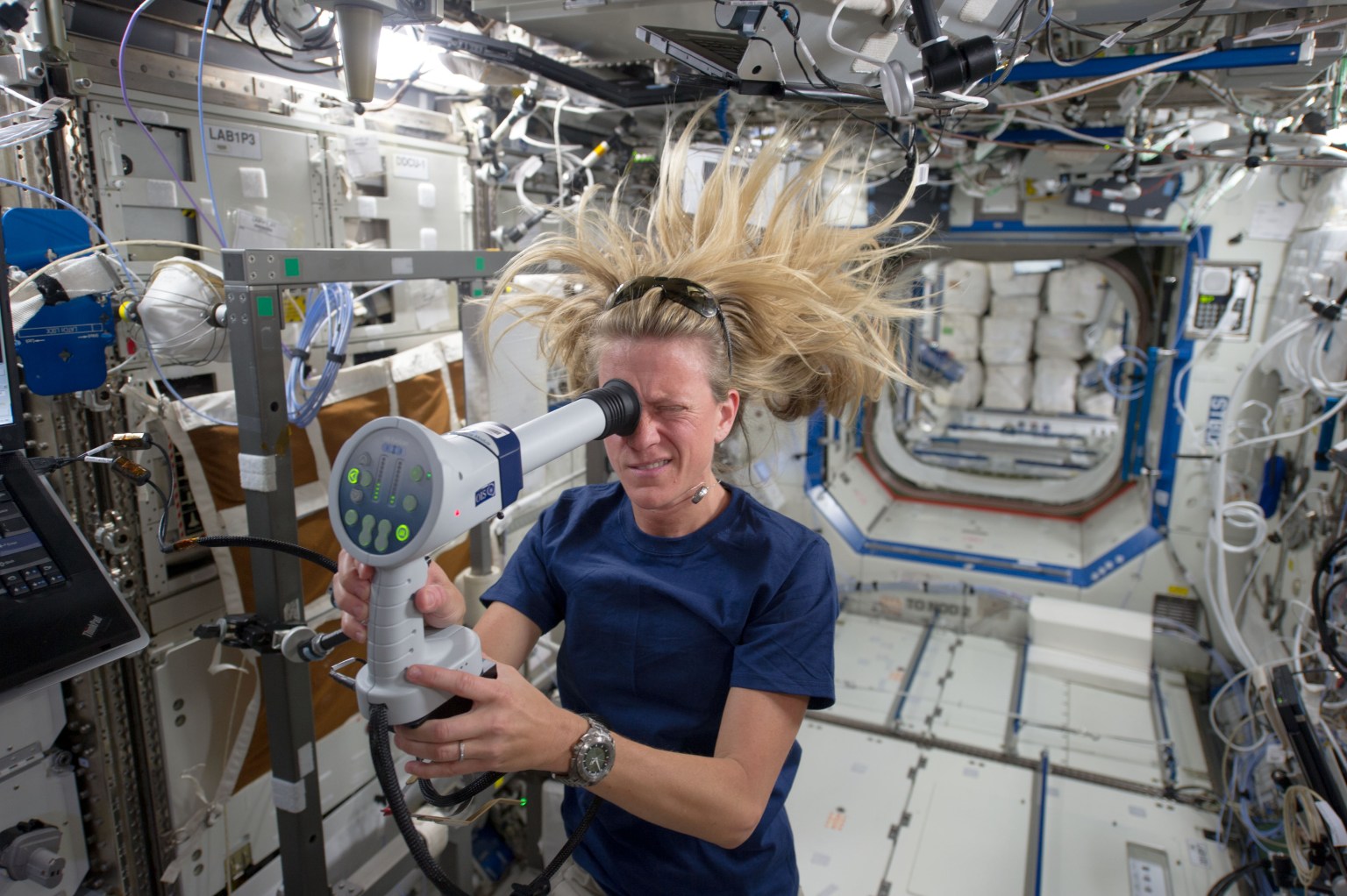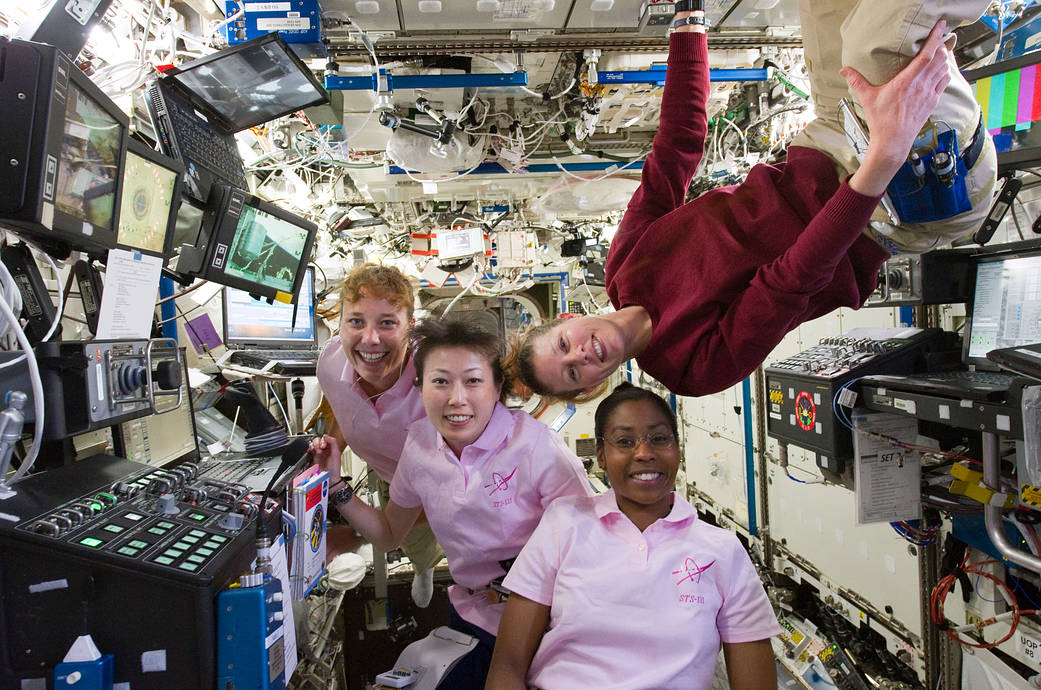Contributors: Sarah McLennan (Cultural Resources Intern) and Mary Gainer (NASA Langley Research Center Historic Preservation Officer)
From NASA History News & Notes, Vol. 29, No. 1, First Quarter 2012 (PDF)
Virginia Tucker first received notice of her appointment to Langley Memorial Aeronautical Laboratory (LMAL) while vacationing in California. A former high school teacher with a college degree in mathematics, she arrived the day after Labor Day 1935 to join four other women in Langley’s first “computer pool.” Before the development of electronic computers, the term “computer” referred to people, not machines. It was a job title, designating someone who performed mathematical equations and calculations by hand. Over the next 30 years, hundreds of women, most with degrees in math or other sciences, would join those first five computers at Langley. Tucker herself helped recruit many of them, traveling to universities and women’s colleges across the South. By 1946, as the overall supervisor for Computing, Tucker presided over a vastly expanded department that had trained about 400 women and placed them in sections across the facility.
Reading, calculating, and plotting data from tests in Langley’s wind tunnels and research divisions, human computers played an integral role in both aeronautical and aerospace research at the lab from the mid-1930s into the 1970s, helping it keep pace with the high output demanded by World War II and the early space race. Along with their contribution to the field, Langley’s computers also stood out for another reason: they were all women.
At the time Tucker was hired, Langley Memorial Aeronautical Laboratory was the main research center for the National Advisory Committee for Aeronautics (NACA). Computing, as profession, dated back to the late 19th century, and typically both men and women were employed as human computers in astronomy, the social sciences, statistical research, and ballistics testing. The first computers at Langley, organized into a central office in the Administration Building, took on calculating work that had originally been done by the engineers themselves. According to a 1942 report, computing sections were designed to process test data more efficiently, relieving engineers of this essential but time-consuming work. A 1942 document on the organization and practice of computing groups at LMAL explained that engineers were free to devote their attention to other aspects of research projects, while the computers received praise for calculating data “more rapidly and accurately,” doing more in a morning than an engineer alone could finish in a day. While the initial computer pool at Langley proved a success, what really drove the expansion of computing (and the expansion of Langley overall) was the United States’ involvement in World War II.
Between 1941 and 1945, employee numbers at LMAL climbed dramatically from 940 to 3,220, and with the construction of the West Area, the lab itself doubled in size. In addition to the central pool, computing sections were established in the main wind tunnels and research divisions. To meet the increasing demand of the war effort and offset the loss of manpower as men were recruited to military service, Langley began actively recruiting female workers. Computing jobs were advertised in trade journals and pamphlets sent to colleges and universities. Recruiters, including Virginia Tucker and some engineers, visited campuses. Other women heard about jobs at Langley via word of mouth. Elizabeth Kitrell Taylor, for example, applied with a friend of hers who had attended a recruitment meeting at their teaching college and figured she would work for the duration of the war. Vera Huckel and Helen Willey, two of the earliest computers, filled out applications simply because they had driven friends out to LMAL for interviews. Perhaps ironically, these women’s friends all either backed out or were not hired, while all three of them went on to careers with NACA/NASA that spanned decades.
During this time, housing became a serious issue for not only the women, but all new employees of the LMAL. The Langley Bulletin, the Center’s newspaper, reported several new housing opportunities in 1942 and 1943. Besides a new subdivision that was to be an “ideal situation because it is possible to establish a new community made up entirely of NACA employees,”1 and several rooms and apartment complexes available for the men, a new dorm was opened exclusively for women. Anne Wythe Hall was a temporary federal housing complex for female government workers. The first 372 units were opened in the summer of 1943. Rent included access to the laundry room and large bathroom on the first floor, as well as three warm blankets per resident. The residents were welcome to entertain their callers in the large lounge in the Community Building. Although there was not a curfew, the house mother locked the doors at 11 p.m. as “protection against prowlers.”
The qualifications required of women who applied to be computers varied, but everyone had to take the Civil Service Examination. In the 1940s, computers were classed as “subprofessionals,” SP-3 (Junior Computer, $1,440 per year) through SP-8 (Chief Computer, $3,200 per year). Most hired at Langley had at least a bachelor’s degree, and many former computers noted in interviews that men with similar qualifications were frequently hired as “Junior Engineers,” a “professional” classification with a starting salary of $2,600 per year.
Working as a computer, despite its subprofessional status, paid much better than the majority of jobs available to women in the 1940s and 1950s. It also provided an entry for women into the field of aeronautical research at a time when most simply were not being hired as engineers; additionally, it offered another career option besides teaching for those with degrees in the sciences. Teaching in North Carolina, Rowena Becker made $550 per year before joining the LMAL computers in 1942, and Marilyn Heyson, hired in 1951, felt that a job at the NACA offered interesting and exciting opportunities, providing an alternative to starting out as a beginning teacher in South Carolina.
A 1942 report supplied further statistics on the 75 female computers LMAL had then: “A good number of the computers are former high school teachers. Their ages may average near 21, but there are a surprising number nearer 30 years old. There is no restriction because of marriage; in fact, some of the computers are wives of the engineers of various classifications here at NACA.”2
Indeed, Langley’s hiring practices for computers, which allowed women to continue employment once married and even while raising a family, were fairly unusual in comparison to the conditions of many jobs available to women at the time. That this practice continued even after World War II and its labor shortages ended suggests that trained computers were employees viewed as worth holding on to.
To help retain women with young children, a proposal was made in September 1943 to provide a child nursery for LMAL working mothers. The desired location was near Cavalier Court, the new housing development outside the gate. Arrangements were made to open the nursery on December 1. Two nurses, one a former LMAL nurse, purchased a house in downtown Hampton for the purpose of turning it into a 24-hour service facility. Two nurses would be on duty during the day and one at night. Children could be enrolled during the day or boarded for the week.
During the 1940s, Langley began recruiting African-American women with college degrees to work as computers. Initially grouped in a segregated section, the “West Area Computers” (or West Computers) processed data sent to the pool and also joined sections on a temporary basis when additional help was needed. Miriam Mann’s daughter wrote that her parents moved from Georgia when her father was hired as a professor at Hampton Institute. Miriam had been teaching but applied for a computer position at the NACA in 1943. Although she already had a degree in chemistry, all “colored” computers were required to take a course in chemistry at Hampton Institute before starting their new job. All calculations were completed with the aid of a slide rule and results recorded in logs and plotted on graphs. Shifts ran around the clock during the war, a drastic change in households where previously the mother had stayed at home.
According to Beverly Golemba’s unpublished study of early computers at Langley, many women were not aware of the West Computers, although both the black and white women she interviewed reported that when computers did do a project with each other, “everyone worked well together.”3 The first African-American computers did the same work as their white counterparts, but in a period when segregation was policy across the South and in the U.S. armed services, they also encountered segregated dining and bathroom facilities, along with barriers to other professional jobs. Miriam Mann found a “colored” sign on tables in the rear of the cafeteria and restrooms designated “colored girls.” Another woman recounted being hired to work in the chemistry division but ending up reassigned to the West Computers because African-Americans were not employed for her original position. Computing sections became more integrated after the first several years. Katherine Johnson, who joined the West Computers in 1953, only spent a few weeks there. Then assigned to work with Henry Pearson in the Flight Research Division, Johnson went on to join the Space Task Force in 1958, where she calculated trajectories for Alan Shepard’s and John Glenn’s spaceflights.
While the specific tasks a computer did varied according to need and her department, the majority of computing work involved three components: reading film, running calculations, and plotting data. During wind tunnel tests, manometer boards measured pressure changes using liquid-filled tubes. Computers “read” photographic films of the manometer readings and recorded the data on worksheets. Working individually for an engineer, or collectively in a computing section, computers then ran different types of calculations to analyze the data and plotted the results on graph paper. All of this work was done by hand, using slide rules, curves, magnifying glasses, and basic calculating machines, like the Marchant or the more popular Friden, which could multiply and calculate square roots. Once completed, the calculations, graphs, and other information were checked for accuracy and sent back to the engineers to design the next tests. In interviews, computers recalled a feeling of camaraderie among section employees in this period, as engineers, model builders, and computers worked together as a team. Margaret Hurt, whose career at the 16-foot tunnel spanned 30 years, remembered everyone at the tunnel addressing each other by their first names and frequently gathering for social activities outside of work.
A tremendous variety of research was done at Langley during the era of human computing, with computers playing a role in major projects ranging from World War II aircraft testing to transonic and supersonic flight research and the early space program. This work required specialized knowledge, and Langley’s computers devised computing methods and techniques specific to aeronautics and aerospace research. Some literally wrote a book on the subject. Helen Willey, for example, edited a Handbook for Data Reduction in the Eight Foot Transonic Tunnel, while several Langley computers consulted on Monroe Methods for Algebra, a guide to using calculating machines in aeronautical research. A number of computers also collaborated with engineers and coauthored research reports. With the introduction of the first electronic computers, human computers took on programming duties as well. The Bell Electronic Computer, a huge machine acquired by the NACA in 1947, had its own computing group headed by Sara Bullock. They were in charge of programming the machine, which used punch tapes of data to run calculations for transonic aerodynamic equations. When Christine Darden was hired as a computer in 1967, she had already studied programming in college. Frustrated by her lack of promotion after five years of computing and programming, she transferred to sonic boom research, eventually earning a Ph.D. in engineering and becoming an engineer in supersonic aerodynamics.
Women working as computers at Langley found that the job offered both challenges and opportunities. Starting out with a subprofessional classification in a section with limited options for promotion, computers had to prove that women could successfully do the work and had to seek out their own opportunities for advancement. Many ended up making a long-term career out of what they had thought would be a temporary job, while others, like Christine Darden, Pat West, and Marilyn Heyson, moved from computing into other careers at Langley. While acknowledging the challenges, former computers also took pride in their work, enjoying the challenge it offered and feeling engaged in the research process they contributed to. Often overlooked in histories of technology, and even in histories of human computing, these women nevertheless played a critical role in research at Langley, back when the computers wore skirts.
Notes
1. “NASA HOUSING PROJECT STARTED 128 Unit Development Begun on Langley Field Road,” Langley Bulletin 1, no. 2 (December 11, 1942): 1.
2. R. H. Cramer to R. A. Darby, “Computing Groups Organization and Practice at NACA,” April 27, 1942.
3. Beverly Golemba, “Human Computers: The Women in Aeronautical Research,” unpublished study ca. 1995.


























